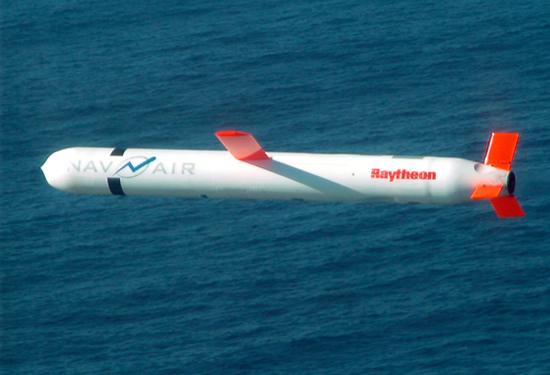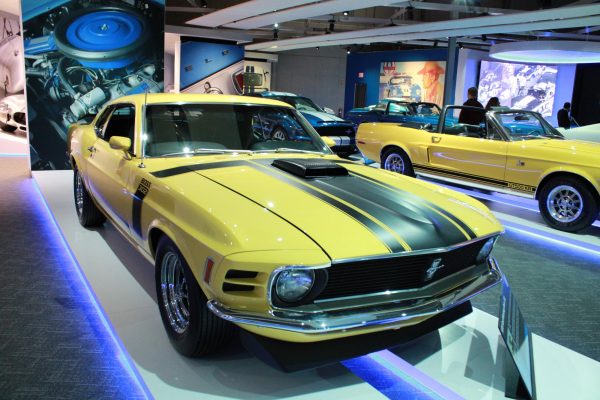Modern Missile Technology: How It Works

March 20, 2017
Since the beginning of the post-WWII era, the armed forces of the world have been using missiles to project payloads onto targets of every description, with the technology involved becoming more and more sophisticated. Nowadays, we simply take it for granted: in a video game, on a jet fighter, from a missile ship, or just from the shoulder, you fire a missile, and it automatically tracks, hits, and destroys a target all by itself, and to explain it, we simply call it science, technology, or sensors. However, the story behind how these, when you think about it, amazingly powerful and self-sufficient tools of destruction is fantastically interesting.
Now, since they’re used for such a wide range of purposes, there is, naturally, a very wide variety of missiles and missile types. You have everything from enormous, stories-high ICBM’s (Inter-Continental Ballistic Missiles) to cruise missiles, which can send a powerful payload over a range of hundreds of miles, to smart bombs, which can successfully guide themselves to a target when dropped, to Air-to-Air missiles, SAMs (Surface-to-Air missiles), Air-to-Ground missiles, etc., along with handheld weapons such as the Stinger. Each missile genre has its own purpose, and is specifically designed and manufactured for that purpose. As a result of the large array of different kinds, we’re only going to give a few example of key types.
Our first projectile is the AIM-9 Sidewinder, the latest of a long line of heat-seeking Air-to-Air missiles that was designed in the late 1940’s. Although it has been in service for a relatively long period, the Sidewinder remains state-of-the-art due in part to upgrades made during its service life. The AIM-9 costs about $84,000, has a top speed of Mach 2.5, is about 9.5 feet long, weighs around 190 lbs., and has a range of almost 18 miles. How does all this happen? Well, let’s start with the most key part: the tracking system. As a heat-seeking missile, the sidewinder tracks the warmth from the target’s exhaust, or whatever else on the target may cause heat. Using a photovoltaic (solar) cell mounted in the nose, the tracking system oscillates this solar cell around, and the hottest heat source generates the strongest electrical current. If the more powerful part, the target exhaust, moves to one side, out of the center of the cell’s oscillation, then the different point and timing of the electrical current will activate motors that move the steering fins at the forward end of the missile. In order to overcome any evasion tactics used by the enemy, the missile will double the magnitude of the change in course, turning twice as much as the change it detects in the target. Powered by a solid fuel rocket engine and guided by the heat-seeking system, the Sidewinder will catch up to the target until it’s in striking range of the enemy, at which point the detonation sensor will kick in. This uses a circular array of specifically placed lasers that, when the missile come up to the target, will be perfectly aligned so that light sensors, also placed in the nose, will pick up the reflected beams, triggering the warhead. This consists of a 20 pound WDU-17/B explosive warhead packed with specialized titanium metal rods that, when the explosive detonates, will fragment into many, highly destructive pieces, destroying the enemy aircraft. However, this is only a short summary of the technology of this fairly small and insignificant piece of ordnance.
Our next subject is a bit larger: a self propelled projectile capable of carrying a 1,000 lb payload, the cruise missile. A modern version of the infamous German flying bombs of WWII, this type is the military’s most convenient, if not most economical, means of eliminating a fairly large target. These can be used for many purposes, as well, including anti-ship roles, eliminating distant ground installations from either sea or ground, nuclear payload delivery, air-launched from vehicles such as the American B-52 Stratofortress or the B-2 Spirit bombers, and others. Again, though, how does it work? Well, let’s begin with the propulsion. Most, if not all, cruise missiles are powered by a jet engine, such as the American Tomahawk, which we will use as one example of a wide range of cruise missiles. It has a turbofan engine, but, for launch from a sub, aircraft, ship, land based platform, or anything else uses a powerful solid fuel rocket booster, getting it into the air. Once the jet has cut in, it simply cruises along at a steady 550 mph, guided by a GPS system which is connected to electronically controlled, automated steering fins, which, together with the lift fins allow it to remain in the air. Now, while the GPS plays the principle part in homing the missile onto the target, other systems, such as the TERCOM (TERrain COntour Matching) system, or the DSMAC (Digital Scene Matching Area Correlation) system, both of which track the ground below and match it with data from the GPS, allowing the missile to stay low to the ground, avoiding enemy radar so that it can reach the target safely, and with pinpoint accuracy. Then, once the missile reaches its target, the combined GPS and terrain matching systems electronically activate the payload, setting off half a ton of destructive power. Other cruise missiles, of course, will have slightly different systems and specifications, whether because of the difference in purpose or in nationality.
Next up: the big ones. Intercontinental Ballistic Missiles can travel thousands of miles, and can deliver multiple powerful nuclear warheads with a high degree of accuracy. These are the modern nuclear deterrents, the engines of MAD, mutually assured destruction, the danger of the cold war. Now, yet again, we will give a rough idea of how they work. The Trident D5, or Trident II, was from 1989, and has since been repeatedly been updated and upgraded to keep it modernized. At its introduction, though, the D5 was 45 feet tall, nearly 7 feet in diameter, and weighed 130,000 pounds. Nowadays, it can carry its nuclear warhead in excess of 8,000 miles, and costs $37,000,000. The exact destructive capabilities aren’t well known, but we can all imagine the missile as extremely potent. Also to be taken into account is that the D5 is only a SLBM (Submarine Launched Ballistic Missile), not actually a true ICBM. How it all works isn’t so clear to me, but the general idea is that it works similar to a rocket, with different, detachable stages like the Saturn V that allow it to blast into space and then hurtle towards its target at Mach 24, following a pre-programed route system that controls the projectile’s maneuvering, in the form of a moveable rocket engine and presumably smaller directional thrusters.
Now, in conclusion, it’s important to remember that the examples given here an others of similar type will be used for different purposes, and will have separate forms of control, guidance, propulsion, and destruction. To give a few examples, TOW anti-armor missiles are controlled via signals sent along wires trailing behind the missile, and Hellfire missiles are laser guided, and the AGM-88 HARM missile is radar guided, while dozens of others could be guided by Television or infrared systems, along with a myriad of other articles, and have considerable different basic configurations. Each of them have a very interesting background, but, for the sake of brevity, have been omitted. For further details, a simple google search will give you more information.
Sources
www.howstuffworks.com
www.Wikipedia.com










